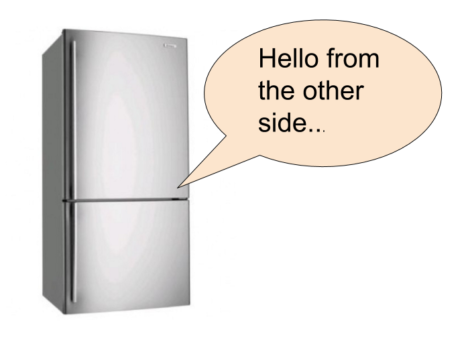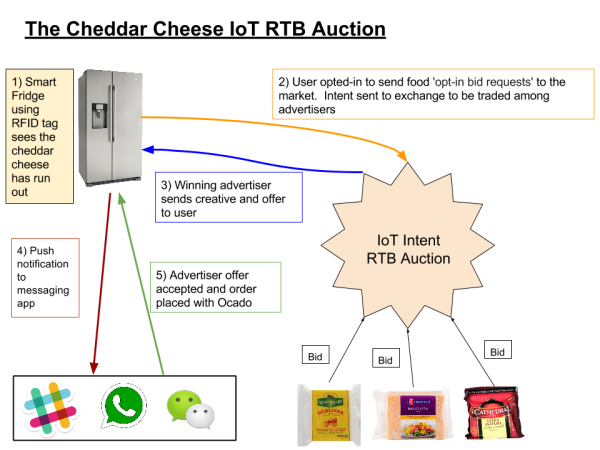Could You Excuse Me? My Fridge Is Talking to Me.
by Ciaran O'Kane on 8th Jan 2016 in News

It is CES week, and everything in your home is becoming 'smart'. You have intelligent washing machines, telling you when your washing is done. You have cerebral thermometers, adjusting heat to your preferred selection via an app on your phone. And you now have fridges that inform when you have run out of your favourite cheddar cheese.
These IoT advances might appear a little faddish, but for programmatic it potentially offers a huge opportunity.
The new IoT data supply
It is perplexing to see 'programmatic' so narrowly defined by the industry as whole. We tend to think of clunky cookie synching and web-based ad units as being the primary domain for programmatic buying and selling.
That might have been the case ever since the real time bidding (RTB) protocol emerged in 2008. But last year we saw programmatic trading being applied to new channels, like audio, out of home (OOH), and linear TV – with a number of media owners and agencies engaging in data-driven buying and selling.
From 2016 onwards we will see another shift – one away from media-based buying to a pure data play. IoT will represent a new area where intent and customer acquisition combine. This will not be inferred on some probabilistic or deterministic basis – it will be based on what a user wants in real time.
The smart fridge could be the next battleground for brands, as they look to service specific opt-in bid requests from users. All this must be caveated by saying that we are at the early stages of IoT programmatic. We are only now seeing the arrival of theses smart appliances.
How programmatic might work in IoT
Let's jump ahead and assume that Whirlpool et al. have manufactured a range of fridges that can ascertain the contents of your fridge – specific foodstuffs and amounts – using RFID tag technology. The unit has a display informing you of the latest data.
Your smart fridge is connected to your preferred shopping service – Ocado or, maybe, Amazon – and tells those services what specific items need to be replenished.
What could be really interesting in this process is the intent auction. Let's say, for argument's sake, that Whirlpool has an opt-in that allows you to send out an intent signal whenever you run out of a specific product – in exchange for a discount of course. The smart appliance will have to optimise its own supply tracking, so that no over-ordering occurs.
Once you have run out of a specific item, an 'opt-in bid request' is sent out. The RTB auction then takes place among advertisers looking to sell to you.
This is all based on an intent signal. The person is in market for something – and he/she has sent a specific requirement to the market.
The winning advertiser will not only display its ad just on a fridge door, it will also get to send a push notification to a user via a connected messaging app – like Slack, WhatsApp, or WeChat – to add its product to the next Ocado order.
It will be a classic mix of brand and direct response metrics – with a CPA that can be optimised based on whether or not the user buys the product.
IoT will be as much about interconnectivity as it is about 'smart' household appliances. Nobody wants a toaster sending updates on a Tefal app every ten minutes or display retargeted ads of a pair of boots you bought months ago.
Push notifications will be centralised. Slack is investing considerable resource and money in building out its platform and opening up to third-party applications. WeChat has already demonstrated the power of an open approach.
The cheddar cheese RTB auction
User intent, coupled with push notification, has the potential to be massive for programmatic; as it replaces clunky inference with real requirements. Below, I have demonstrated how an IoT cheddar cheese RTB auction might work in practice.
As we grapple with the growth of ad blocking on web-based applications, it would seem counterintuitive to suggest users would make this kind of information freely available. Nobody likes being sold to – especially in a cack-handed way like retargeting. The reality is, people need stuff; and if there is the potential of a discount there is likely to be a lot of uptake.
Explicit intent and push notification is going to be a sweet spot for programmatic.
This week's unveiling of IoT-powered appliances at CES is just the beginning of the possibilities in connectivity. We will doubtless see more developments here in 2016; and programmatic will soon be a part of that conversation.
Now, if you'll excuse me, I'm off to aggregate IoT intent for the mid-to-long tail of the smart canopener segment.









Follow ExchangeWire